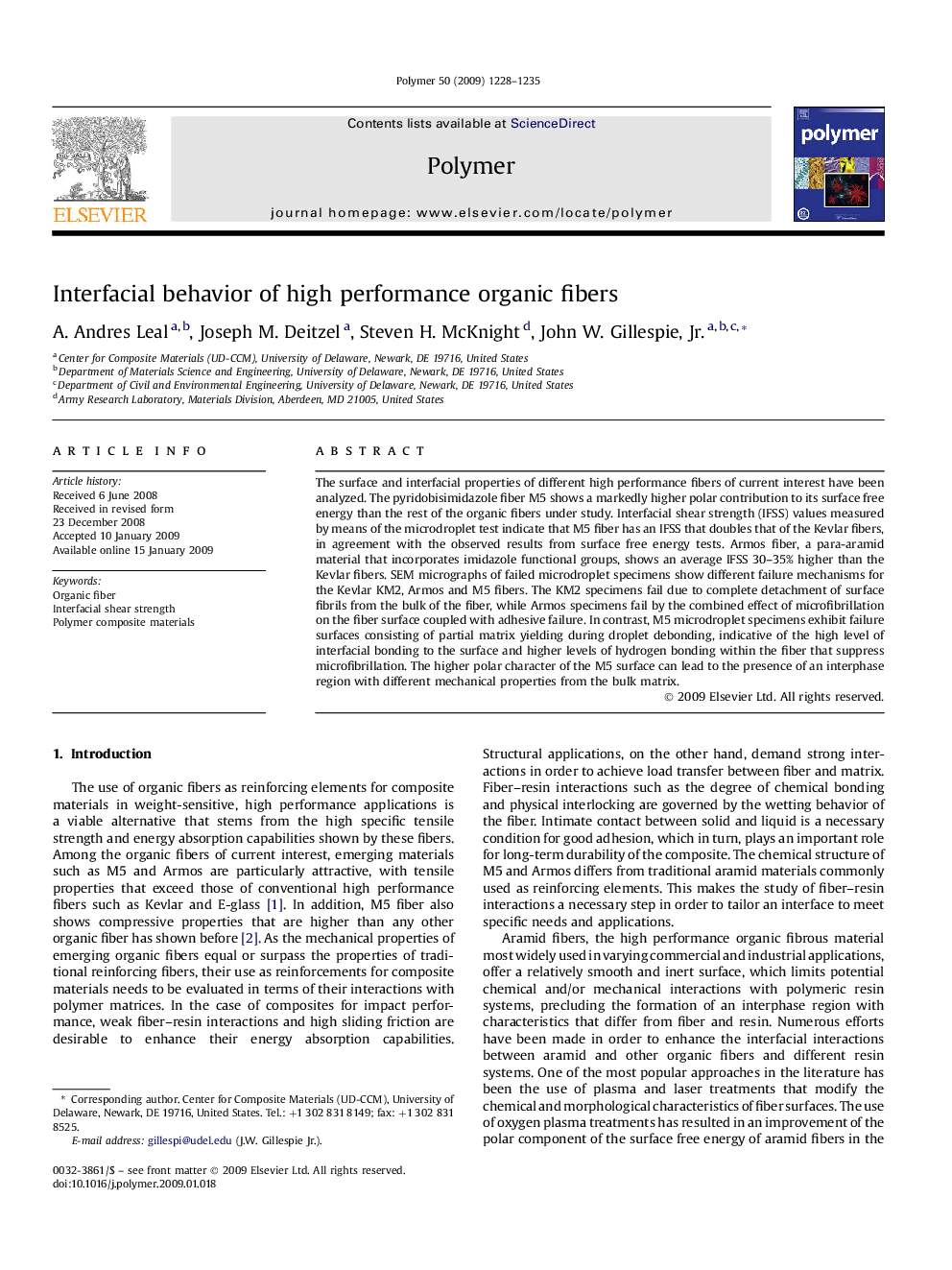| Article ID | Journal | Published Year | Pages | File Type |
|---|---|---|---|---|
| 5184991 | Polymer | 2009 | 8 Pages |
The surface and interfacial properties of different high performance fibers of current interest have been analyzed. The pyridobisimidazole fiber M5 shows a markedly higher polar contribution to its surface free energy than the rest of the organic fibers under study. Interfacial shear strength (IFSS) values measured by means of the microdroplet test indicate that M5 fiber has an IFSS that doubles that of the Kevlar fibers, in agreement with the observed results from surface free energy tests. Armos fiber, a para-aramid material that incorporates imidazole functional groups, shows an average IFSS 30-35% higher than the Kevlar fibers. SEM micrographs of failed microdroplet specimens show different failure mechanisms for the Kevlar KM2, Armos and M5 fibers. The KM2 specimens fail due to complete detachment of surface fibrils from the bulk of the fiber, while Armos specimens fail by the combined effect of microfibrillation on the fiber surface coupled with adhesive failure. In contrast, M5 microdroplet specimens exhibit failure surfaces consisting of partial matrix yielding during droplet debonding, indicative of the high level of interfacial bonding to the surface and higher levels of hydrogen bonding within the fiber that suppress microfibrillation. The higher polar character of the M5 surface can lead to the presence of an interphase region with different mechanical properties from the bulk matrix.
Graphical abstractDownload full-size image
